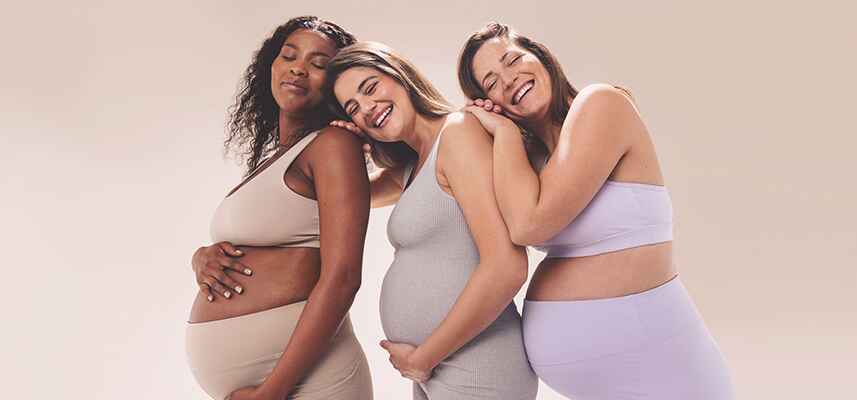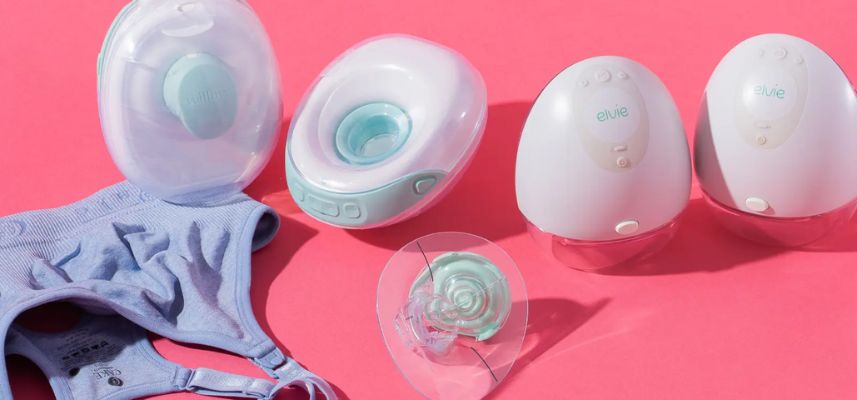Preparing for pregnancy and understanding what to expect during those three trimesters inspires lots of questions for new mamas! Know that you are in great company. Your questions mirror the questions of so many other mamas.
And here is a common one: ”If I have breast implants, can I successfully breastfeed my baby?”
Know that while there may be some additional lactation complications associated with having breast implants, it is possible—and very common—for women who have had a breast augmentation to still successfully breastfeed.
Let’s dig in.
Breast Augmentation Surgery
What is breast augmentation surgery?
Also known as an augmentation mammoplasty, breast augmentation is a cosmetic procedure aimed at increasing the appearance of breast size through the insertion of a breast implant. This procedure is different from a breast lift or breast reduction surgery, though all of these surgical procedures are typically considered cosmetic breast surgery.
In a breast augmentation procedure, a cosmetic breast implant is secured underneath the breast tissue and above the chest wall. Sometimes, the implant is placed above the chest muscle (subglandular placement) where it is less likely to interfere with milk ducts, and other times it is placed below the chest muscle (submuscular placement) where there might be a higher risk of lactation interference.
While there are several different types of implants available, the most common are silicone and saline implants. Saline breast implants are filled with salt water, which is absorbed and expelled from the body naturally if the implant leaks or pops. Silicone implants, more popular for their natural look and feel, are filled with silicone gel and, if popped, may fill the breast pocket until removed from the body.
There are many different reasons someone may consider getting breast implants, including feeling self-conscious about your breasts and desiring an appearance change, correcting uneven breast sizes, or getting implants as part of breast reconstruction surgery that may occur after removing all or part of one of both breasts.
How is the surgery performed?
There are three main kinds of surgical incisions used for breast augmentation surgery: transaxillary (through the armpit), periareolar (around the nipple), and inframammary (under the breast). A fourth and less common incision type is transumbilical (through the belly button).
Incisions made under the fold of the breast or at the armpit—inframammary and axillary incisions, respectively—should not affect nursing, lactation, or milk production. These incisions are least invasive to the lactation and breastfeeding structures within the breast.
But your surgeon may recommend a periareolar incision—also called a "smile" incision—which cuts around the areola to decrease visible scarring. While this may lead to a more aesthetically pleasing result, this type of incision may accidentally cause damage to milk ducts or important nerves needed for breastfeeding, resulting in reduced sensation in your nipple, trouble with milk ejection, and, in turn, milk production.
It’s important to note that many mamas with periareolar incisions are able to breastfeed without issue. Many surgeons are able to retain the connection between the areola and the milk glands and connective tissues, and even in cases where these connections are severed, it is possible for them to partially or fully regenerate over time—our bodies are truly amazing.
If you’re considering a breast augmentation and know you’d like to have children and breastfeed after the procedure, we recommend informing your surgeon of those plans. Knowing that you intend to breastfeed may impact their recommendations and the methods they use to perform your breast augmentation.
Does breast augmentation surgery impact milk supply?
The amount of milk mothers with breast implants will be able to produce not only depends on the amount and function of their milk ducts, but also on their lactation hormones and other factors. So, while there is a correlation between these issues, there are multiple factors at play for lactation success. This said, there is also no guarantee that mothers with breast implants will have a full milk supply post-breast surgery or won't experience problems with breast milk production.
As always, be sure to discuss any concerns you have with your doctor or a lactation consultant before and after surgery, and share any issues as they arise.
When should I have surgery if I want more children?
If you are considering breast implants and either have not had children or are not done having children, you may want to postpone your surgery until you’ve delivered your last child to avoid any risk of lactation complications due to surgery.
Many women report having no issues breastfeeding post-surgery, and their children have normal growth and development. But while you may not have any issues post-surgery, there is no way of knowing for sure.
If you are a nursing mom with a breast augmentation, be sure to inform your lactation consultant of your surgery. This will help your lactation consultant set reasonable lactation goals and develop a plan to ensure the best possible breastfeeding experience.
Breastfeeding with Implants FAQs
We spoke with board-certified plastic surgeon Dr. Emily Kirby to get answers to your most common questions about breastfeeding and pumping with implants. Here’s what we found:
Can I breastfeed with breast implants?
Yes, many women with breast implants are able to breastfeed, but it does depend on a few things.
While every pregnancy and child is different, studies show that the percentage of women who successfully breastfeed is roughly the same in women with breast implants and women without breast implants.
Ultimately, there is no way to know for sure how your breastfeeding journey will go until it begins. It’s important to remember that difficulty breastfeeding is a common issue many women face, whether they have breast implants or not.
Will silicone come out in my breast milk?
The short answer is that this would be very, very unlikely.
Silicone transfer has never been reported in breastfeeding mothers with silicone breast implants. In comparative studies between breast milk from women with silicone breast implants and women without implants, there were no significant differences in levels of silicone present.
To put the study findings into perspective, there is more silicone in cow’s milk and formula than there is silicone in breast milk from both mothers with silicone breast implants and without implants altogether.
Even in a breast that contains a ruptured implant, breastfeeding is considered safe. If you have a ruptured implant, it is best to wait about three months after you finish breastfeeding to have surgery for the removal or replacement of the ruptured implant.
Can I use a breast pump with breast implants?
Yes! Because breast implants are designed to mimic the look and feel of real breast tissue, there is no reason they should inhibit the functionality of a breast pump. It is also very unlikely that your implants will be damaged by the use of a breast pump.
However, there may be some special considerations women with breast implants should make.
If your pump has a suction or strength regulator, start at the lowest level and work your way up. You can increase this slowly over time, depending on your comfort.
As you increase the strength, make sure you are not experiencing pain or pressure on your implants. If you do experience any pain, stop the pump, reposition, and begin again. If you experience any unusual discomfort or have any concerns at all, it’s best to err on the side of caution and reach out to your physician or the surgeon who performed your breast surgery.
Also an important note: if you have decreased sensation in your nipples or if your nerves were damaged by breast surgery, your milk may not let down at a typical rate. Simply be aware of this.
Potential Side Effects
While it is possible to breastfeed with implants, here are some common experiences you’ll want to take note of. These include, but are not limited to, the following:
Engorged Breasts
Implants take up extra room in the breast, which can lead to increased pressure as your milk starts to come in. It also may mimic the feeling of milk-filled breasts, which may signal to your brain that you do not need to produce milk.
Mastitis
Mastitis is an inflammation of breast tissue in part of the breast (most commonly a milk duct) that can lead to pain, swelling, and infection. Studies show that women who have breast implants are at a slightly higher risk of developing mastitis in the first six months after birth.
Nipple Problems
Some women experience a variety of nipple issues when breastfeeding with implants, including
- Nipple inversion: Inverted nipples retract inward into the areola rather than protruding outward. People can be born with nipple inversion, but they can also develop nipple inversion from breast surgery complications, mastitis, and skin conditions. Nipple inversion can make it hard (though not impossible) for babies to develop a strong latch. If you have nipple inversion, speak with a lactation consultant about strategies for helping your little one learn to latch.
- Nerve damage and pain: It isn’t uncommon for someone to experience nerve damage and pain after having a breast augmentation because the surgery requires incisions at and around your breast nerves. These nerves can be cut or damaged during the procedure, the inserted implant can cause stretching, or scar tissue growth can cause pressure and pain. When managing pain, follow the advice of your healthcare provider.
- Sensitivity and desensistivity: Nerve damage or severing can also cause sensitivity or desensitivity. Some women even experience both ends of the spectrum during their healing process. The good news is that this loss of sensation is not likely to last in the long term. Gentle breast massage and nipple stimulation can help address nerve-related sensitivity and loss of sensation. Reach out to a lactation consultant if sensitivity or desensitivity is impacting your ability to breastfeed.
Need Some Support?
Whether you have implants or not, have breastfed before, or this is your first time, we highly recommend working with a lactation consultant. Every pregnancy is different, and it’s normal to have questions when setting and achieving your lactation goals. Having an expert available can help relieve some stress, ensure you are safely approaching pumping and breastfeeding, and help you work toward a successful breastfeeding journey.
References
https://www.mayoclinic.org/tests-procedures/breast-augmentation/about/pac-20393178
https://www.kirbyplasticsurgery.com/blog/breast-implant-placement-under-muscle-vs-over-muscle/
https://academic.oup.com/asj/article-abstract/43/7/731/7031565?redirectedFrom=fulltext
https://www.ncbi.nlm.nih.gov/books/NBK44780/
https://www.med.umich.edu/1libr/Gyn/Lactation/BreastfeedingAfterBreastImplants.pdf
https://www.hackensackmeridianhealth.org/en/healthu/2022/02/03/can-you-breastfeed-with-implants
https://www.mayoclinic.org/diseases-conditions/mastitis/symptoms-causes/syc-20374829
https://pubmed.ncbi.nlm.nih.gov/34486797/
https://pubmed.ncbi.nlm.nih.gov/36752943/
https://my.clevelandclinic.org/health/diseases/25118-flat-and-inverted-nipples
https://www.edinaplasticsurgery.com/will-i-lose-nipple-sensation-after-my-breast-augmentation/









